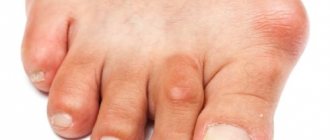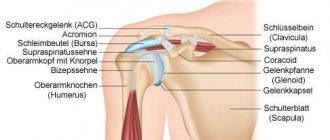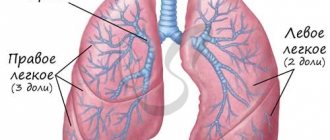Often young women are perplexed: where did the strange lump appear on their hand?
?
Although painless, but quite large (from 0.5 to 6 cm in diameter), it cannot go unnoticed due to its location. So what is hygroma
- cancer or a purely aesthetic defect?
Although hygroma on the arm is a tumor-like formation, it, contrary to misconceptions, is not an oncological disease
, and also
never degenerates into cancer
. This disease is quite widespread (up to 50% of all neoplasms on the hands) and can be successfully treated. On the other hand, this subcutaneous formation can cause discomfort or even interfere with normal blood circulation in the hands.
Hygroma
(or, as it is also called,
ganglion
) is a capsule-bag that is dense to the touch, filled with a viscous and jelly-like protein liquid mixed with fibrin. The hygroma noticeably protrudes over the ligaments and tendons and practically does not move under the skin. Most often, synovial cysts are observed in women aged 20 to 30 years (⅔ of the total number of patients). Children are least likely to suffer from it.
In what cases should you worry about treating hygroma and can it be prevented?
Hygroma - formation in the form of a tumor
Types of hygroma
There are different types of hand hygromas:
Mucous cysts - hygromas occur against the background of deforming arthrosis of the joints. Most often they form at the distal interphalangeal joint - in this case, hygroma occurs in the area of the nail phalanx, at the base of the nail. Hygroma on the finger develops when osteophytes, present in deforming arthrosis, begin to irritate the skin, underlying tissues and capsular ligamentous apparatus. Because of this, a hygroma occurs - a formation that is hollow inside, in a transparent capsule, with transparent, jelly-like contents.
When a hygroma appears on the nail phalanx, it begins to put pressure on the growth zone of the nail and deform it.
Treatment of hand hygroma
Treatment boils down to excision of the cyst. Due to the fact that with mucosal cysts the skin over the lump on the hand becomes weak, the formation is excised along with the changed skin. After the operation, plastic surgery is performed - both with free skin grafts and with complex skin reconstructions.
A tendon ganglion is a cyst that is formed from the tendon sheaths and the walls of the tendon sheaths. Such hygroma of the hand can cause not only pain, but also limitation of motor functions.
Treatment of a tendon ganglion involves removing the formation - this does not pose any technical difficulty. After operations there are practically no relapses or side effects.
Synovial cysts in the area of the wrist joint (hand hygroma) are the most common type of hygroma.
Education point
One of the ways to get rid of hygroma in the shortest possible time is the option of puncture - a specialist inserts a needle into the formation and aspirates its contents. This is a quick treatment option that does not require hospitalization or any major costs. The cyst decreases in size and collapses, but there is still a possibility of its return, since the walls of the formation remain.
Foreign experts have improved the technique of puncturing the cyst and added the final stage - the introduction of sclerosant. A special substance glues the walls of the hygroma, which determines the 100% absence of recurrence of pathology in a given place.
Other quick methods of therapy include the technique of crushing the formation. However, this manipulation is not modern and can disrupt the function of the joint and cause inflammation. In addition, after crushing the hygroma, the tumor recurs in more than half of the cases.
Hygroma of the wrist joint
Most often, wrist hygroma occurs on the dorsum of the joint and looks like an ordinary lump on the hand - round and tumor-like. Hygroma is inactive, painless, dense, elastic consistency, with unchanged skin. According to statistics, almost 70% of hygromas are formed on the back of the wrist.
If the hygroma occurs on the dorsum of the hand, then it is clearly visible when the joint is flexed.
Much less commonly, wrist hygroma develops on the palmar surface of the wrist joint, in the area of the radial artery (in the place where the pulse is usually checked). This arrangement makes the surgical procedure very difficult.
Treatment of hygroma on the wrist
Treatment of such a hygroma is very difficult, since you have to very carefully isolate the cyst in the area of the radial artery, trying not to damage it. Carelessness during surgery can result in serious injury to the artery, which can disrupt the blood supply to the hand. Hygroma on the wrist requires the most professional and careful treatment, so only an experienced surgeon can perform a correct and effective operation.
Treatment of hand hygroma
Treatment of wrist hygroma can be surgical or conservative. The relative risks and benefits of any treatment should be carefully analyzed.
Conservative treatment
Previously, hygromas were treated simply by crushing them. That is, under pressure, the “ball burst” and the contents poured into the surrounding tissue. This is an absolutely harmless procedure. The intra-articular fluid is sterile and cannot in any way inflame the surrounding tissues. But 90% of all those crushed by hygroma recur, because... the edges of this burst capsule grow together very quickly and the liquid begins to accumulate again. This type of treatment is now used only by patients themselves out of ignorance.
50% of hygromas can disappear on their own if you reduce the load on the hand and wrist joint.
Hygroma puncture
A fairly effective method, but it is possible only in the early stages of the disease, when the size of the hygroma does not exceed 1 cm.
Methodology:
Local anesthesia is performed over the area of the hygroma. Next, the hygroma is punctured and its contents are removed with a syringe. Without removing the needle, the syringe is changed and a sclerosing agent is injected. A pressure bandage and orthosis is applied to the wrist joint for 5 weeks to allow the edges of the emptied hygroma to stick together and grow together.
If the patient does not wear an orthosis after the procedure, then movements in the wrist joint will provoke the release of intra-articular fluid and the fragile internal scar will not be able to withstand the pressure. What can cause recurrence of hygroma formation.
Therefore, one of the mandatory conditions and the strictest recommendation is to wear an orthosis.
If the hygroma is more than 1 cm or has a cellular structure (formed by several sacs), then there are indications for surgery, if the hygroma, of course, bothers the patient at all.
The structure of the wrist joint
The wrist joint is very complex in its structure and this is largely due to its versatility. In order for us to make various movements of the wrist, various types of bones are “assembled” in the joint (radius, ulna, metacarpal bones, carpal bones, cartilaginous articular disc), connected by ligaments designed to ensure the strength of the joint. It is the ligaments that allow the wrist and hand to move, rotate and rotate in all directions. All these elements, merging in one place, form the capsule of the wrist joint, in the cavity of which there is synovial fluid.
Hygroma, “growing” in the wrist joint, gradually increases in volume, “pushes apart” the surrounding tissues and ligaments and, ultimately, protrudes from the back or palmar side of the wrist, resembling a moving ball in appearance.
What it is
Hygroma (synovial cyst or ganglion) is a formation that is a capsule filled with thick liquid.
This is a benign cyst that mainly forms in the joint area. Most often these tumors appear on the hands. More than half of all neoplasms on the hands are hygromas. The size of the hygroma varies from 0.5 to 6 cm in diameter. Small tumors, as a rule, do not cause discomfort other than aesthetic ones. Large hygromas can be difficult. This is due to pressure on nearby nerve fibers. This leads to pain, which requires prompt medical intervention. Moreover, in approximately 50% of cases, hygromas go away on their own¹.
According to one epidemiological study, hygromas are formed annually in 3 people for every 10 thousand population². In the vast majority of cases, these are persons aged 20-30 years. Hygromas are extremely rare in older people and children. In women, such tumors appear 2-3 times more often than in men.
"Professional" hygromas
Most often, hygromas are formed in athletes who use sports equipment. These are tennis players, hockey players, golfers, weightlifters and others. Musicians, typesetters, painters and turners also often encounter hygroma. Any work associated with high load on a joint (or group of joints) increases the risk of synovial cysts.
Causes of hygroma of the wrist joint
Hygroma forms when a “weak spot” appears in the capsule, which occurs when it becomes thinner due to damage or changes in it.
The main reasons that can lead to this condition:
- Joint injury;
- Consequences of surgery;
- Persistent minor injuries to the hand (and joint) that occur as a result of repetitive activities, such as playing tennis;
- Inadequate physical activity on the arms and especially the hand.
Prevention of hygroma and its complications
For standard prevention of hygroma of the wrist and other joints, you should:
- avoid injury and hypothermia;
- promptly treat arthritis, arthrosis and other connective tissue diseases;
- minimize the load on the joint, incl. monotonous (from time to time take a break from work or monotonous activities to warm up);
- pay attention to hereditary and metabolic diseases that can negatively affect the health of the musculoskeletal system (gout, diabetes);
- follow safety precautions and exercise rules when playing sports;
- Avoid self-medication for injuries and other lesions in the hands and wrists;
- Monitor your body weight and maintain a low-calorie diet rich in vitamins, minerals and amino acids.
If in your family or for your occupation there is a high predisposition to hygromas and other diseases of the musculoskeletal system, you should think about additional measures. Rheumatologists recommend an annual course of prophylaxis with chondroprotective drugs. They help strengthen connective tissue and improve its metabolism, preventing the development of degenerative cells. Artracam is ideal for this purpose.
- due to the high bioavailability of glucosamine sulfate, pleasant taste and convenient sachet form.
Take care of yourself!
Images designed by Freepik
Hygroma of the finger
The appearance of a finger hygroma is a tumor-like formation (similar to a lump) localized on the finger, in the area of one of the joints (in some cases, multiple). Often the formation reaches 2-3 centimeters in a few days.
Often, hygroma of the finger looks like an ordinary wart, and only a doctor can accurately determine the pathology during examination.
A hygroma on a finger (a photo of which can be found on the Internet) can spontaneously open and, at first glance, disappear from the finger. But, as a rule, after some time the tumor appears again, since the capsule of the formation itself does not disappear anywhere, but continues to produce fluid and be filled with it. In addition, this can provoke the appearance of one more or even several hygromas on the finger (photo).
Of course, hygroma is not life-threatening, but painful and unpleasant sensations can affect the quality of life for the worse.
Diagnostics
To make an accurate diagnosis, you should consult an orthopedic surgeon. Determining the causes of the disease and treatment methods involves conducting an examination: the doctor must determine the location of the tumor and its size. Of the laboratory tests, only a biopsy will be indicative.
Diagnosis is carried out using:
- MRI or ;
- Ultrasound;
- X-rays;
- If necessary, a puncture of the hygroma is taken.
Lump on the thumb bone
The reasons for the appearance of a bone may be the following:
- Wrong shoes;
- Shoe heels that are too high;
- Hereditary occurrence;
- Weak ligaments.
If you have already had a lump on your bunion and you start wearing orthopedic shoes, then you may experience sharp pain in the big toe joint.
What to do if your feet hurt?
Foot pain can indicate various diseases.
Sensation of Valgus damage - with this disease, as a rule, the joints in the knees bend in different directions, as a result of which the feet diverge and a bump appears. In other words, the thumb becomes dislocated and inflammation occurs.
Since the vital activity of the thumb is supported by synovial fluid, due to injury, it gets into the usual local fluid with low availability, which causes inflammation and bone pain.
joint pain
The human body is supported by uric acid, which reverses the process of crystal formation in different areas within the body. In the case of this disease, the following symptoms may be observed:
- Pain in bones and ligaments;
- Joint tumor;
- Formation of tophi.
How to get rid of pain in a lump-shaped formation?
Inflammation of the joints can lead to problems in the body as a whole. A characteristic feature was tandem severe headache. Problems begin with choosing shoes, since not all fit, due to the fact that the lump is in the way. Often, to get rid of the growth it is necessary to resort to surgery. Then strictly adhere to the rules - wear only orthopedic shoes. For rehabilitation, it is often recommended to engage in physical therapy.
In cases of severe pain, physical devices are used to treat inflammation of the joints. As a rule, in order to get rid of inflammation, electrophoresis, massage, and medicinal baths are used, which must be done for several days without a break for ten minutes.
The recipe is as follows: Heat three liters of water, add one tablespoon of soda and ten drops of iodine to it.
How to apply compresses correctly?
In folk medicine, the following compress recipes are used:
- Grind three garlic and tori onion cloves, mix and apply to the inflamed area, you need to keep it for several hours until it starts to burn.
- Bee waste, namely propolis, must be softened and applied to the growth for three to four hours a day, for five days.
Depending on the degree of neglect of the lump formation, massage treatment may be prescribed. With this method, vegetable oils are used in a ratio of three drops of oil per 50 milliliters of water. Oils can be different: lavender, lemon, pine, cypress.
When using these oils, you can quickly get rid of pain; if you do not have any of the listed oils, add 20 drops of any essential oil.
Medicines and methods of treatment for inflammation of the lump
For drug treatment, the use of Fastum gel or ibuprofen ointment is prescribed. Hydrocortisone is recommended for injections; depending on the degree of the disease, some medications are administered intravenously.
For pain, it is necessary to use baths with steamed chamomile, sage, and calendula flowers.
A compress of yarrow and burdock root also helps. Brew two tablespoons of dry mixture for half a liter of water. After that, you need to leave the solution to steam for half an hour, then apply a bandage soaked in the solution to the bump.
All of the above procedures are very helpful in combating pain caused by a growth on the thumb joint.
But self-medication is not recommended; in case of inflammation, it is best to first contact a specialist to determine the severity of the disease. Author: K.M.N., Academician of the Russian Academy of Medical Sciences M.A. Bobyr
What modern methods of getting rid of hygroma exist?
Removal of this bubble with a gel-like liquid is possible both from the skin and from the joint. There is a thin camera and special instruments that allow you to look inside the wrist joint through small punctures of 2-3 mm. This procedure is called arthroscopy from the words “arthro” joint and “scopy” to look. Through these punctures you can not only look into the joint, but also perform useful manipulations inside, for example, remove a hygroma. The advantages of the arthroscopic method are smaller scars on the skin, faster rehabilitation, and a relatively lower likelihood of relapse.
When is surgery needed?
Most people with hygroma want a clear answer to this question. However, the doctor cannot answer it. A synovial cyst is not a dangerous disease; it has a chance to go away without any treatment; surgery (like any intervention) has its own possible complications and risks. Whether to operate on a hygroma or not is a patient’s informed decision. When a person understands the situation and is ready to share responsibility for the decision made with the doctor, then one can choose the time and place to perform the intervention.
How is the operation to remove hygroma performed?
I will describe the basic principles using the example of the most common dorsal hygroma on the wrist.
- The operation is outpatient. There is no need to stay in the hospital.
- Local anesthesia. Anesthesia means unnecessary risks, as well as excessive preoperative examination. I use a mixture of lidocaine and epinephrine, this avoids discomfort from the tourniquet, reduces the likelihood of a toxic reaction to the anesthetic and prolongs the effect of pain relief to 4-5 hours.
- Transverse access. Longitudinal access leaves rough, unsightly scars.
- It is imperative to excise the fragment of the joint capsule from which the hand hygroma grows. Only the skin is sutured.
- I don't use immobilization. For the first 2-3 days, a thick soft bandage is applied, which limits movement and makes the early postoperative period as comfortable as possible. Prolonged immobilization after surgery can lead to stiffness, but does not affect the likelihood of relapse.
- The skin heals in about 2 weeks.








